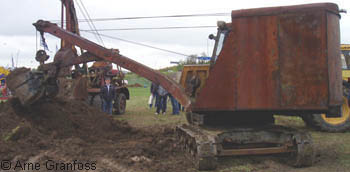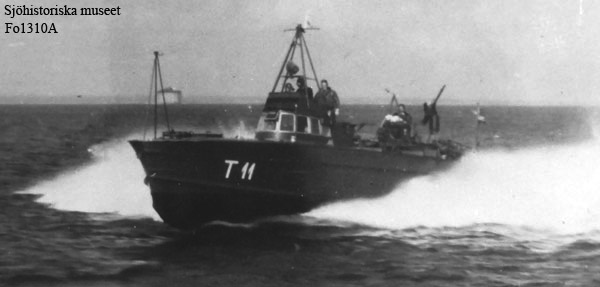Military equipment to Sweden

 UNDER CONSTRUCTION Version 0.41
UNDER CONSTRUCTION Version 0.41
|
Sweden in World War II - across borders
|
 |
![]()
After World War I Sweden had cut down on the size of the military. When signals in the 1930s indicated that another large war could take place in Europe, the need for military equipment was large. To handle this, there were among others various contacts and business with other countries. There were also some contacts where Sweden was the provider.
On this page you will foremost find fragments about what crossed Sweden's borders.
![]()
In general, Sweden had plenty of suitable production facilities to produce armaments. For example rifles, guns, ammunition, helmets, ball bearings, engines, vehicles and ships. Much of the needed raw material was found in Sweden.
In the 1930s Sweden was one of the leading producers of ships. When the threat of a new large war in Europe grew, the warship production incresed. Among others destroyers were produced. [s26]
![]()
During 1933 Sweden invited tenders for delivery of bomb planes. It was recommended to purchase three Junkers K 85, built by the Swedish company AB Flygindustri. The government decided to purchase two planes, but changed the decision within short. Instead they decided to let a British company give an offer. In March 1934 the new recommendation also suggested the Swedish-built Junkers. Then the government wanted to widen the group of potential deliverers. In mid May the new recommendation was given - the same Junkers plane was seen as the best solution for the needs of the air force. In late June the government decided that the British plane should be ordered. [s75]
Eventually two planes were ordered. The first was fetched in Britain in September 1938, the second was delivered from Handley Page to the British Air Ministry - instead of to Sweden. [s75]
Meanwhile, the Swedish air force had ordered 40 Junkers Ju 86K from Germany. The plan was that another 40 planes should be built on licence at the new Swedish company SAAB. [s75]
One reason for the acting of the Swedish government could be that they felt reluctant to order bomb planes from a Swedish company that was a front for a German company. Earlier Sweden also had bought various planes from the Swedish company Svenska Aero, who was a kind of a front for the German company Heinkel. [s75]
![]()
In 1938-1939 around 40 U.S. aviation engineers were in Sweden, to help the Swedish company ASJA with the license production of the Northrop 8A-1, in the Swedish airforce called B 5. [s75]
![]()
In December 1939 a group of Swedes went to Italy, in order to buy military material. The result was among others 4 destroyers (2 of them called torpedo boats in Italy), 4 motor torpedo boats and torpedoes. [s70]

Sweden also bought engines, mines, a quantity of planes, and some material for the army from Italy. [s72]
The motor torpedo boats arrived to Gothenburg on a Swedish cargo ship around late March 1940, while the destroyers had a more eventful journey to Sweden. [s71]. More about that on the page "Military conflicts, incidents...".
Italian engines for motor torpedo boats were purchased and manufactured under licence during the war. Italian company Baglietto also constructed a new longer motor torpedo boat in 1941, and 11 boats were built in Sweden on licence. [s70]
![]()
Sweden also bought 4 motor torpedo boats from Britain - two arrived on a cargo ship in 1940, but the other two were confiscated by the British at the outbreak of the war [s70]. One of them (T4) got a suitable royal commander - Prince Bertil (nicknamed 'the motor Prince' for his interest in motor racing) [s71].

![]()
![]()
On 30 September 1939 the Swedish government decided to allow negotiations for purchase of reconnaissance seaplanes. The result was to, besides already ordered Seversky 2 P-A bombers, also order seaplane versions. Uncertain about the willingness for the U.S.A. to sell war material to neutral countries, also 27 planes were ordered from Germany - Heinkel He 114. [s75]
No seaplanes were delivered from the U.S.A. The Heinkel factory told in January 1941, after delays, that 12 planes were ready to deliver. They were to be flown to Sweden by German crews, but ... Around the beginning of March the 12 planes arrived by train, in such a bad condition that they had to be overhauled. On 1 April 1941 all the 12 planes were in service, 9 months delayed. The other 15 planes were not delivered [s75]. The reason that Sweden could buy these Heinkels was, that they were considered to be unsafe during take-off and landing in high sea [s83].
![]()
Some examples: Sweden ordered 60 planes from the U.S.A., Republic "Guardsman" - only 2 were delivered. 60 Seversky EP-106 were delivered in the early 1940s. Of the 144 Vultee 48C Vanguard ordered from the U.S.A in February 1940, none was delivered before the export was stopped. [s75]
![]()
In the spring of 1940 Sweden got the oppurtunity to buy planes and engines from Italy. The agreement included delivery to Italy of raw materials from Sweden, that were essential for the Italian war industry. [s76]
![]()
In most of 1940, the only available import route to Sweden from the west was via the Finnish Arctic Ocean port Petsamo. Among others fighter planes bought in the U.S.A. arrived to Petsamo in boxes, and were freighted on Swedish trucks to Sweden. [s64]
![]()
The stopped deliveries from the U.S.A. also included ordered airplane engines. There could not be any production under license either. The Swedish company Svenska Flygmotor found the solution. A Pratt&Whitney Twin Wasp engine was dismantled and the parts measured - and then began the production of the "Swedish Twin Wasp". [s75]
While the 'copying' was under way, Sweden was offered to buy the same type of U.S.A. engines from France - via German contacts. The engines were in various conditions, but with the great need for airplanes Sweden bought some hundred engines to fill the needs for the first of the new Swedish fighters J22. [s75]
![]()
In 1942 Sweden bought license for production of airplane engines Daimler-Benz DB605, and in 1943 also some 70 original engines were delivered including propellers. [s76]
![]()
Sweden had an agreement with the Allies and the Germans about exchange of soldiers detained in Sweden. It said that if an exchange took place, the number of soldiers from Germany should be the same as the number of soldiers from Britain/USA. [s49]
The Swedish political navigation during WWII had led to an exception for Britain, and Sweden received 50 radar stations. [s49]
In late June 1944 the British air attaché offered the Swedish air force to buy 50 "AMES Type 6" radar stations. His suggestion to start with 5 stations, that were in stock and could be delivered a week after an order, was accepted. The 5 stations arrived to the wing F 8 in early August 1944. On 24 October another 30 radar stations were ordered, and the first 15 of them arrived by planes from mid January to early March 1945. [s75]
During the Sonnie project (see "GB/allied troops in Sweden") a similar exception was made for the USA, and Sweden received 50 P-51 Mustang fighters. The first group was flown to Sweden on 10 April 1945, and the fourth/last on 25 April. One group met two German fighters who were shot down by one USA pilot, and after landing two swastikas were painted on the nose of the Mustang. [s49]
It is told that some USA pilots flew under the bridge Västerbron in Stockholm before landing on Bromma airport. [s49] (At least two such flights under the bridge were made later, with a Saab Safir for the Swedish movie "Gula divisionen" (the Yellow division) released in 1954. The stars of this movie were Saab J29 "Flygande tunnan" (the 'Flying Barrel'.).)
![]()
2019-04-07. www.granfoss.se. Text/pictures: Arne Granfoss